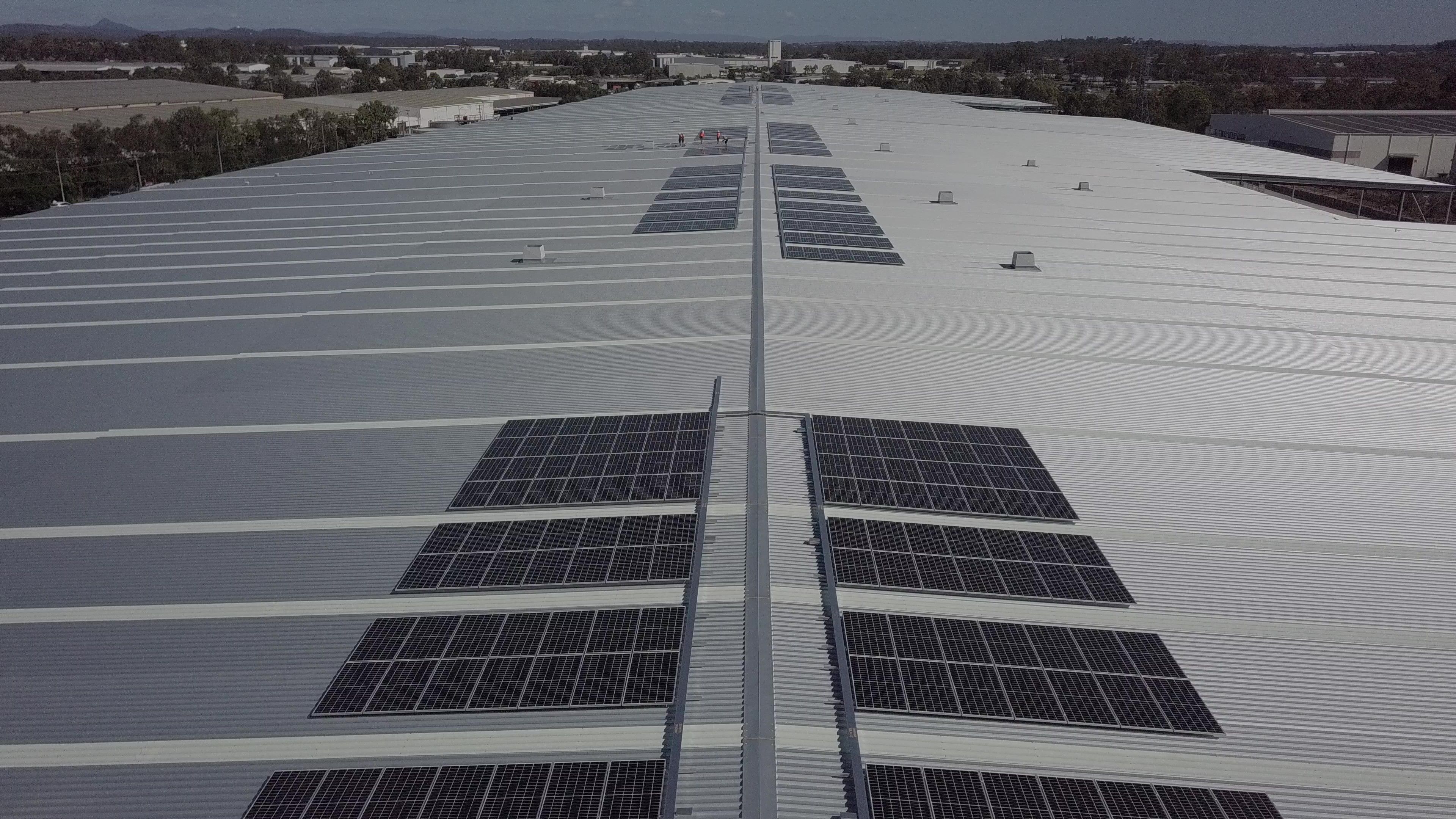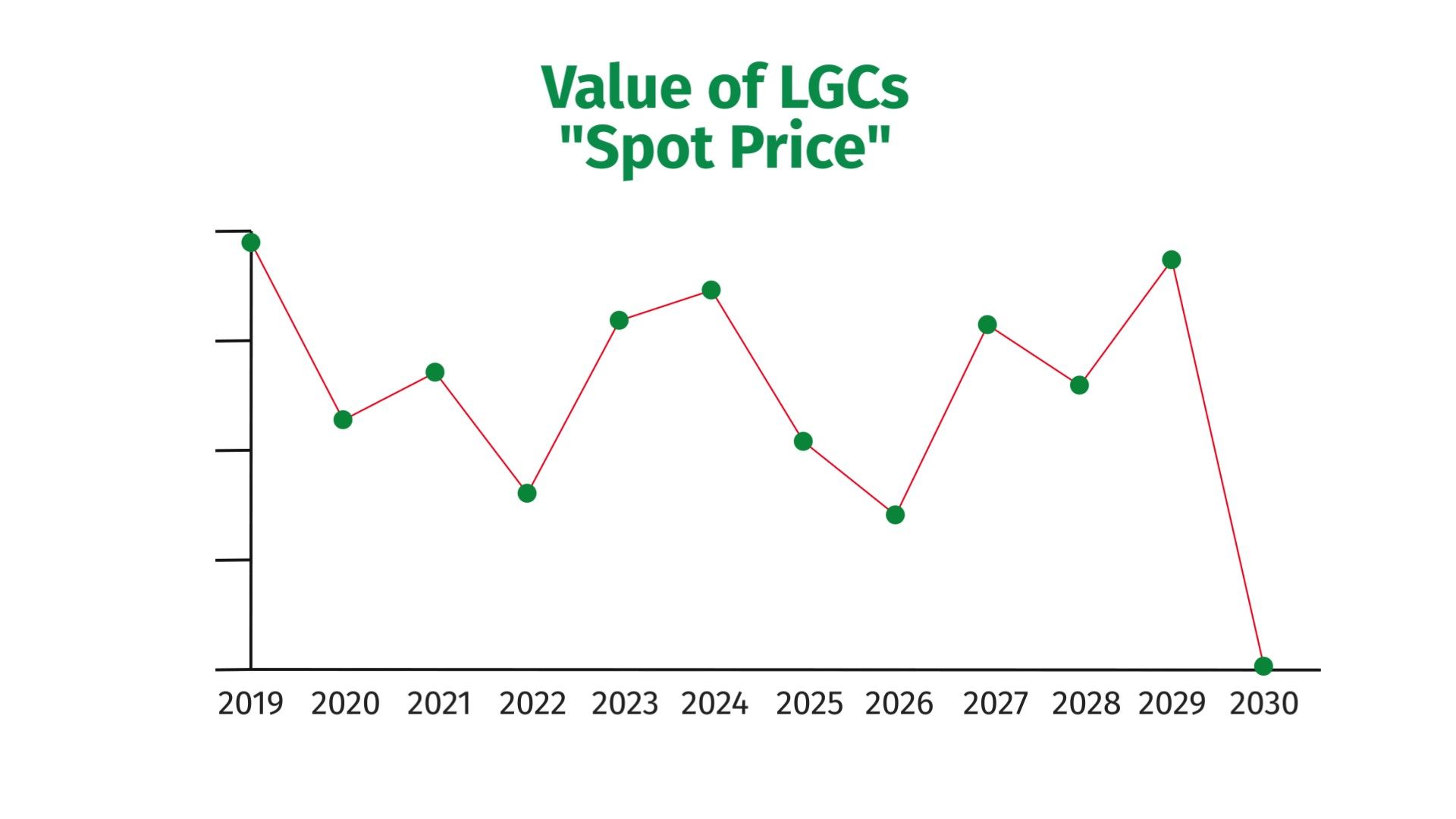We explain what LGCs are, their value, and what it means for large-scale solar operations.
What are LGCs?
To understand LGCs, we first need to take a look at the Australian Federal Government’s Renewable Energy Target as it directly interacts with and impacts LGCs. Two decades ago, a nationwide scheme called the Renewable Energy Target was introduced and aimed to incentivise small-scale renewable energy system installations up to 100kW and also large-scale energy systems that would generate over 100kW.
LGCs stand for Large-Scale Generation Certificates, and operate very similarly to STCs (read our blog on STCs here), in that they are a tradeable commodity that you sell based on your system’s production and system output. However, where STCs are sold upfront and solar system owners receive a “rebate” on their installation costs, LGCs can be traded quarterly or annually as the system produces power.
This means that solar system owners must pay for their 100kW+ system upfront to then claim back LGCs quarterly or annually based on the system’s performance. The system’s production and output are metered, verified, and sold into the LGC market quarterly or annually, and the solar system owner is paid a “rebate” accordingly.

LGC Value - Spot Price or Fixed Price?
Similar to the stock market, LGCs carry a degree of risk as the value or “spot price” fluctuates. It is at the discretion of the solar system owner to participate in the spot market and ride the wave for years to come (similar to variable interest rates), where LGC creation and dollar value will vary. This is the riskier option but can result in larger “rebates” when the LGC market is strong.
Alternatively, solar system owners can lock in a “fixed price” by hedging LGCs and guaranteeing a forward fixed price for a certain amount of years. This means that you will receive payment for LGCs over that period of time, based only on the dollar value that was locked down initially. This carries less risk but can mean large returns are missed if the LGC market performs better than when the price was originally fixed.

.jpg)
What do I need to consider if purchasing a 100kW+ solar system?
Installing a high-quality solar system is particularly critical when considering LGCs. With the risk associated with LGCs, you need to ensure you have invested in a system that will perform and guarantee an expected amount of power, to generate more LGCs and therefore better returns. An inferior solar system will result in missed LGCs as it will not be capable of maximum production and output for the property, meaning you will be missing out on the best “rebate” possible. A high-quality system will be capable of producing maximum power for decades to come!
As the Renewable Energy Target scheme expires in 2030, it’s important to install solar as soon as possible to reap the benefits from it. If you install a 100kW+ commercial solar system in 2022, you are allowing for eight years of “rebate” payments as LGCs are continually sold in that period of time.
Purchasing a larger solar system than you currently need is another factor to consider, as not only are you generating more LGCs from the larger system, but you are also accounting and preparing for potential additions to your property in the future, such as electric vehicles, chargers, and battery storage. Preparing for those additions now ensures you are capturing the LGC value for the maximum amount of time, rather than needing to upgrade in the future to account for those additional energy users. Remember, the more LGCs you generate, the larger “rebate” you receive.
In Summary
Property owners looking to install a large, 100kW+ commercial solar system must understand and reap the benefits of LGCs while they still exist. LGCs are a continual “rebate” based on a property’s solar production and output. It is critical that a high-quality solar system is installed to ensure the maximum creation of LGCs for the future, which results in larger “rebates”. Installing solar now is the best action to take, as the Renewable Energy Target expires in 2030, and rebates in their current form will no longer exist. Consider installing a larger system to accommodate future energy users while still benefitting now as more energy is produced to create more LGCs.
Who are we?
At Springers Solar we only recommend and install quality components that have been expertly selected by our team of in-house engineers, solar experts, and project managers. We design our systems to fit the unique requirements of your home or business and only select the components that will perform under those conditions. We are trusted by some of the largest inverter manufacturers in the world and are recognised as preferred/recommended installers for a large portion of them. Choosing solar is an investment so taking the time to research and choose components that will work for your project is important to us.
What are LGCs?